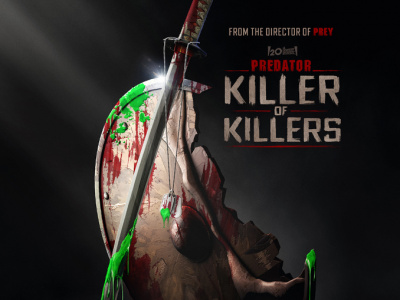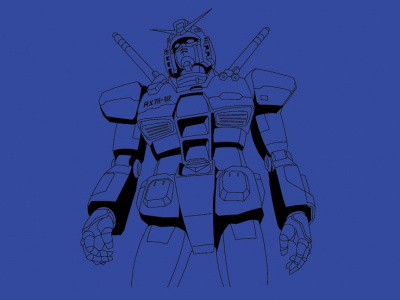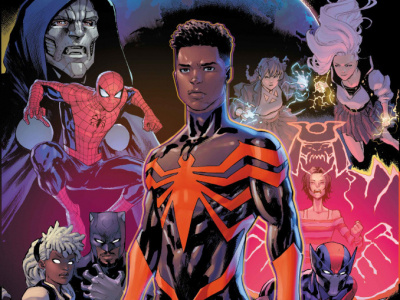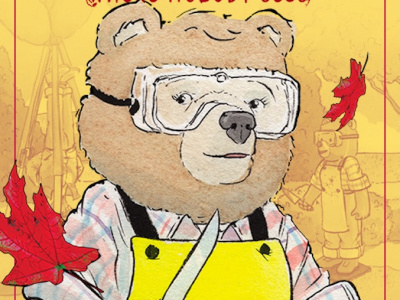
A few weeks ago at the San Diego Comic-Con, we sat down with DC President and Publisher Paul Levitz (DC Senior Vice President Sales and Marketing Stephanie Fierman sat in) for our annual talk about the state of the comic business and DC's place in it. In Part 1, we talk about the state of the market for comic books and periodicals, and for Web and phone delivery of comics. In Part 2, we discuss DC's experiment with weekly comics. In Part 3, we talk about DC's CMX line. And in Part 4, we discuss the future of manga style work produced in the
As we always do in these annual interviews, let's talk about the over-all state of the market, and periodicals vs. graphic novels.
Levitz: I think we're in a very healthy time. Clearly the visible path of the periodical business and the book business are diverging more over time. You're seeing the small press publishers choose which they are depending on their approach to business: some saying, a la the Top Shelf model, that they're basically a small book publisher; and others, Boom as an example, becoming primarily periodical publishers; and relatively fewer companies in the position we're in or Marvel's in where we're strong forces in both with programs that relate to each other. That model doesn't seem as replicable for the smaller guys for whatever set of reasons, so that's one of the interesting things.
Both businesses are continuing to grow. The book format is growing faster, but of course, it's still the smaller one by a significant margin. It's a good time.
We were just talking about the relative readership sizes of the graphic novel and comic format--could you elaborate?
Levitz: It's very hard to get a handle on. Stephanie's worked on two large market research projects since her arrival to, in part, try to analyze that. As you know, I'm prone to doing back-of-the-envelope analysis of these sorts of things that is not necessarily supportable but sometimes gets to the right answer anyway.
It smells to me like the number of human beings who are regularly reading graphic novel formats in this country is now larger, or about to be larger than the number of human beings regularly reading the periodical formats. I think that's a very interesting transition, because that has never been true before.
What are DC's current thoughts about Web delivery of comics, either as marketing or as an alternate distribution channel and secondly, phone delivery of comic content?
Levitz: I think phone delivery seems like a much more natural thing for the kind of art that has historically been created for newspaper strips in this country [rather] than comic books. I think the panels fragment out much more easily.
When I look at what's been done in superhero or Vertigo kinds of material and I try to envision it working on a phone, I have a lot of creative questions about how that's going to work and be logical to anyone. How do you make the panel fun? A part that readers don't appreciate consciously is that the really good artists compose a page, not a series of panels. When you remove that impact from the art of a Joe Kubert, a Walt Simonson, or a Jim Lee, you're removing a very important creative dimension to it that is, on one level, invisible or subliminal, but very important.
Does the phone work as a delivery device for telling a comic story that is created with it in mind or that is accidentally compatible with it? Sure, and I'm sure some content will be delivered that way. For the whole 'Let's take the whole library and put it on a phone tomorrow morning,' I'm a little cynical on that one, time will tell.
I think we will see evolutions of original storytelling to reach most of these media and there will be some form of digital delivery that will work for the libraries for some people over time. I don't see it as being anything that cannibalizes much of the comic book business, but maybe it helps us reach some new readers.
Do you want to talk about the 52 stunt?
Fierman: We are looking at a number of options, long term, in terms of what we want to do on the Web. Short term we are about to launch a program to get 52 a fresh kick in the market. 52 is on week 12, and for the first time we've cut a deal with a third party website that has huge traffic and attracts very gaming -- and comic-friendly fans. We'll be launching in August with UGO. And we'll be putting up the first arc of five issues, if not more, through a partnership with UGO. We're really excited about that.
Do you scroll through multiple pages?
Fierman: No, it's a page turning software and it looks very good -- the pages are very crisp. The page online feels very much like the print in that the story really does pull your eye effortlessly to the page like it does when you're actually reading the real book.
Do the ads stay in?
Fierman: No. There are no ads inside the editorial.
So that's a way to help a new reader who may not have had access a way to catch up?
Fierman: Yes, absolutely.







